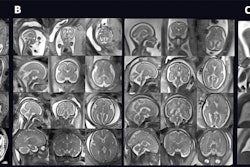Initial percutaneous nephrostomy (PCN) tube placement leads to more radiation exposure for pregnant women with suspected kidney stones, according to a study published October 27 in Urology.
Researchers led by Madison Lyon, MD, from the Glickman Urologic Institute in Cleveland, OH, found that PCN placement after initial imaging is significantly tied to a higher number of procedures, radiation exposure per procedure, and total radiation exposure per suspected stone episode compared with stent and primary ureteroscopy.
“Based on discussions with our interventional radiology colleagues, dislodged PCNs or severe encrustation may result in much longer and more complex procedures, including the potential need for entirely new access into the collecting system, thereby resulting in higher fluoroscopy use,” Lyon and colleagues wrote.
While the incidence of kidney stones – otherwise known as obstructing nephrolithiasis – is low in pregnant women, they can have serious consequences on the health of the mother and fetus. In cases of suspected obstructing nephrolithiasis, intervention may be required. Options include ureteral stent, PCN, or primary ureteroscopy, with the potential for multiple subsequent procedures that often use fluoroscopy.
The Lyon team wanted to investigate the potential differences in radiation exposure per suspected stone episode between the options. It included data from 78 patients. Out of the total, 40 underwent initial stent placement, 22 underwent initial PCN placement, and 16 had ureteroscopy.
Also, 76 of the patients had ultrasound performed for initial evaluation, while one patient underwent initial CT for flank pain, and one other patient underwent initial MRI. Additionally, 12 patients had subsequent CT scans performed on them for definitive diagnosis during pregnancy.
The team also noted that all PCN placements were performed by interventional radiologists while ureteroscopy and ureteral stent procedures were performed by urologists.
The researchers found that the total average radiation exposure per stone episode was significantly higher in patients who underwent PCN. These patients also underwent significantly more procedures and had higher average radiation exposure per procedure compared with patients who underwent stent and ureteroscopy.
| Comparison in radiation exposure between treatment methods for kidney stones | |||
|---|---|---|---|
| Stent | Ureteroscopy | PCN | |
| Average radiation exposure per stone episode | 3.7 mGy | 0.2 mGy | 286.9 mGy |
| Number of procedures required with fluoroscopy | 0.5 | 0.3 | 4.3 |
| Average radiation exposure per procedure | 7 mGy | 0.85 mGy | 67.8 mGy |
| *Data compared with PCN achieved statistical significance. | |||
The researchers also reported that more than 40% of PCNs experienced dysfunction, and the average duration between PCN exchanges was 16.5 days.
“Through detailed review of patients’ electronic medical record, we found that 46.2% of PCNs malfunctioned,” the researchers wrote. “In these cases, the most common causes of dysfunction were encrustation or blockage [35.8%], pain [6.6%], or inadvertently dislodgement [3.8%].”
The study authors suggested that based on their findings, ureteral stent or primary ureteroscopy “may be a favorable option compared with PCN when appropriate.” They also cited previous studies showing that radiation dose to both the patient and operative team can be minimized by several strategies; these include reducing fluoroscopic dose, increasing the distance to the source, decreasing exposure time, using pulsed fluoroscopy, and employing beam collimation.
The full study can be found here.



















